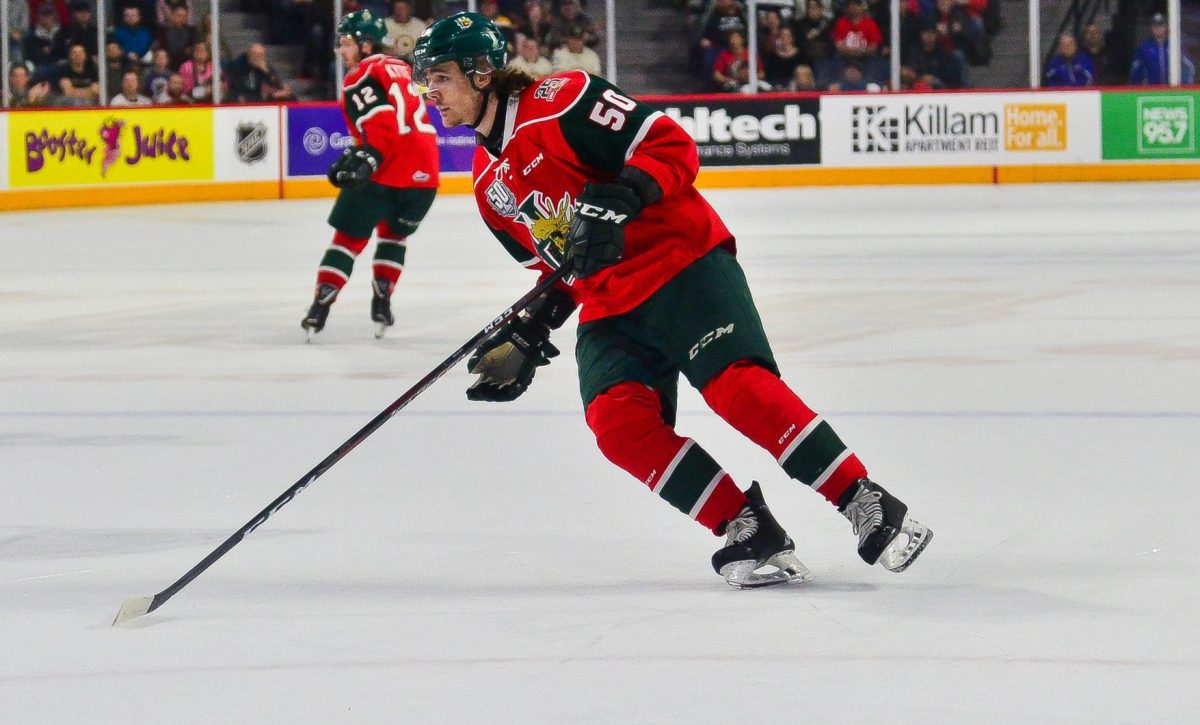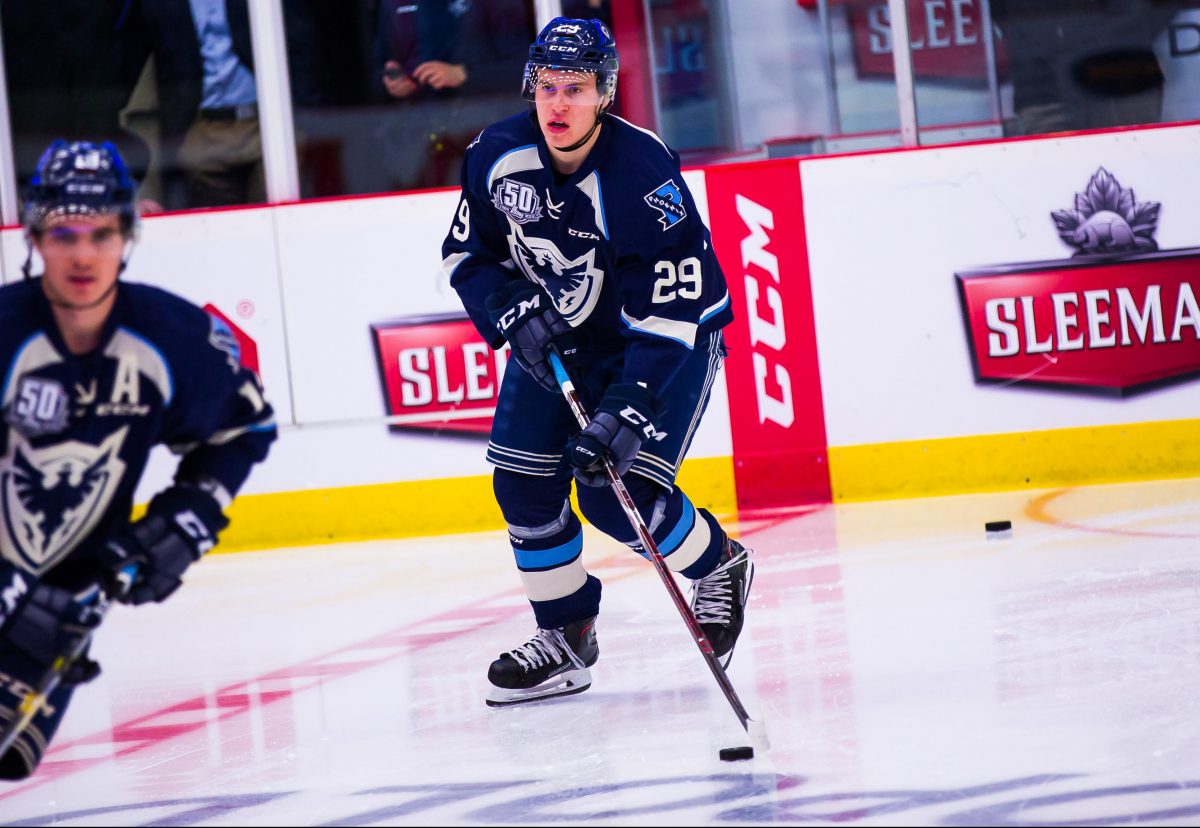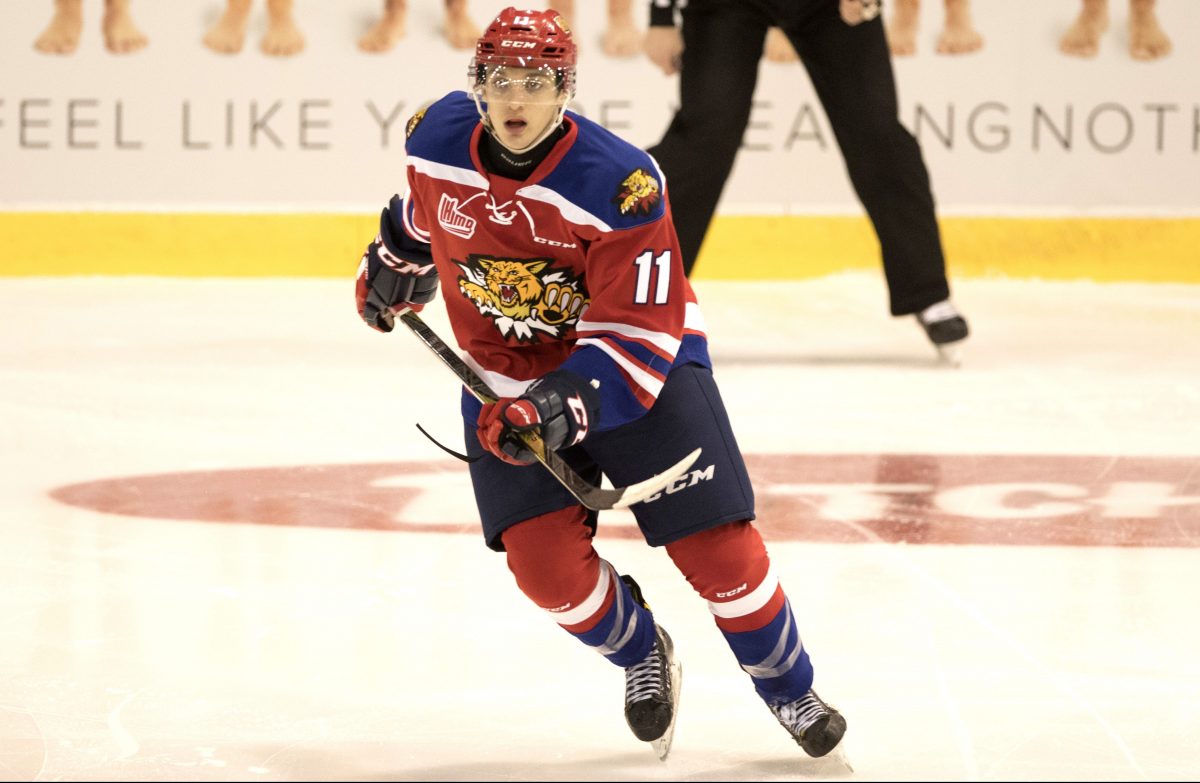Pick your treat.
The QMJHL’s three best prospects are all intriguing options. They play the game differently, but they all bring strong skillsets to the table off the wing.
Every one of the three is capable of being a fan favourite at the next level, for different reasons; Halifax’s Raphaël Lavoie for his goal scoring and offensive abilities, Sherbrooke’s Samuel Poulin for his two-way play and Moncton’s Jakob Pelletier for his energy and 200km/h pace. Each winger has the tools to succeed, and we have already seen glimpses of their success in their junior careers.
The Halifax Mooseheads were the toast of junior hockey this season with the maximum amount of eyeballs directed their way all year long as the hosts of the Memorial Cup. While they got to the summit and lost, they still gained a lot of fans for their teamwork and resilience through the year, and that includes the Q’s best prospect in Lavoie.

Though the righty Lavoie struggled a bit through the first half of the season, he was part of a deadly trio in the second half of the year with veterans Antoine Morand and Samuel Asselin. That red-hot line produced a lot of offence in the months of January and February, helping propel the Mooseheads to the top of the Eastern Conference.
Once the playoffs began, the Raphaël Lavoie show opened its doors. The Chambly, QC, right winger stormed out of the gate and dominated the first three rounds. The Mooseheads struggled on occasion during that time, especially in the first round against the Quebec Remparts, but Lavoie was the one stabilizing offensive force, scoring 17 of his playoff leading 20 goals in the first three rounds, cooling off a bit in the final against the Rouyn-Noranda Huskies. He added three points in four Memorial Cup games.
While he did see his production slow down a bit in the final stages of the post-season, Lavoie solidified himself as the top QMJHL prospect with his strong offensive game centered around his great skating, shooting and stickhandling abilities. A second-round pick in his Q draft year, Lavoie exploded in his 17-year-old season, scoring 30 goals and 63 points while leading the league in game-winners.
Where Lavoie struggles is reading the play off the rush and his passing. He is capable of passing the puck well, but he needs to adjust to changing speeds and plays die off his blade when the speed shifts. There are plays offensively that see him pass off to a teammate hoping a Moosehead will get to the puck first, or a no-look pass into a defended area of the ice. Lavoie needs more awareness with the puck in the offensive zone, but he can read plays well in terms of shooting. Some refinement should settle this aspect of his game.
Defensively, Lavoie is adequate, and is helped by his long frame. His skating stride is longer and allows him to conserve more energy up and down the ice, using less strides than most to cover more ice. As a result, he can close gaps quicker at the QMJHL level, and it will be interesting to see where his game evolves in that area moving forward. Lavoie has shown the desire to improve without the puck, and has grown in that area in his Q career.
Despite his size, Lavoie does not seek out physical play, and takes punishment. He does not bang bodies in the corners, but his size allows him to protect the puck and explore all spots on the ice in pursuit of the puck with immunity. However, Lavoie is not a typical power forward at this point. He does have the size and the skating to be an effective power forward at some point in the future, but that time is not now.
Though Lavoie has played center in midget, he has not played at that position for an extended period of time at the QMJHL level, and his talents are better served off the wing. His skating would allow him to develop further into a center, if he puts the work in, but he is no center out-of-the-box. It would not be surprising to see him get more reps at center next season, however.

Samuel Poulin is a left-handed shot who plays the left side and has been Mr. Everything for the Sherbrooke Phoenix this past season. He’s been dominant at times offensively, strong defensively, physical, and an overall positive every time he steps on the ice. His play in the opening round against the Blainville-Boisbriand Armada nearly won the Phoenix the series single-handedly, and unlike Lavoie, Poulin is very much a willing physical participant. It is a major reason why Poulin has few doubts in terms of carving an NHL career.
His story starts with pedigree. Samuel’s father, Patrick, played parts of 11 seasons in the NHL from 1991 to 2002. Samuel was born in the tail end of Patrick’s career, while he was a member of the Montreal Canadiens. A lot of Patrick’s game is seen in Samuel’s; a strong, hard working, no-nonsense winger who can chip in on both ends of the ice. In junior hockey, in a higher-scoring era, Patrick had 138 points in the year after he was drafted, and he made the NHL full time at 19 years old. While those are lofty expectations, and Samuel likely won’t match Patrick’s ninth overall selection in 1991, Samuel had 76 points in his draft year, six more than his father, and produced 14 more in 10 playoff games.
Poulin has an excellent shot – forehand, backhand and a ferocious one-timer – that he can unleash at any time and in any area of the offensive zone. Not many players in junior hockey can pick corners from 40 feet out like he can, and he has the passing and stickhandling to allow him the room to shoot. Opponents have to respect his shot and his creativity, which makes him a dual threat off the rush and in the zone. He can find the open man and hit them on the tape from anywhere in the zone, and he can stickhandle to anywhere on the ice.
Poulin’s greatest asset, on top of all the skills demonstrated, is his elite hockey sense and IQ. He is seemingly always in the right place at the right time, with the consistency and smarts only a player who grew up around the game at a high level could have.
The only thing holding back Poulin is his skating ability, but it has improved strongly since he entered the QMJHL two seasons ago. His skating now opens up lanes for him offensively, and allows him the gap control and solid defensive play off the rush to hit where he aims to go at the correct time. His skating is still a work-in-progress, but his already-noted improvements in this area do not go unnoticed.

Last but not least is the engine of the Moncton Wildcats since he entered the league: winger Jakob Pelletier. From his first shift in the QMJHL he has been a leader on the ice for the team for his tenacious work ethic and his all-around offensive abilities. His 89 points are the most of the three players on this list, as he found instant chemistry with linemates Jeremy McKenna and Mika Cyr, both candidates for later-round selections as overage prospects. He also had 39 goals on the season.
Unlike the other two players, Pelletier suffered a lower-body injury in game 1 of the Wildcats’ first round series against Baie-Comeau, and he was never healthy for the rest of the playoffs. He missed some time and returned wounded to the lineup, basically skating on one good leg. As a result, putting stock in his three points in seven playoff games would be off the mark.
To really get the sense of Pelletier, one has to see him live. The stats are one thing, but his impact on every game needs to be seen. He is effective every shift in all zones. He is a hound for the puck and applying pressure with every stride. He is a smaller player at 5’9” and 157 pounds, but he plays like he is 6’2” and 220. He hits on the forecheck, he fights for his ice in the corners and in front of the net, and uses a quick reaction to send pucks into dangerous areas.
His shot is very good, but he scores more off rebounds and scrambles than off the rush, and his passing, on either hand, is strong. He is effective at reading the play at high speed and it opens up the lanes for him to wire a puck where it needs to go. He finds creative solutions to problems, and knows how to use his lower center of gravity to his advantage. It would not be unexpected to see his skating speed increase and his physical play ramp up when he gains more muscle.
Pelletier is a left-shooting left winger but he is not locked to that position on the ice. He patrols all sides and all areas, as long as his linemates allow. His defensive play is solid for his effort level; he may not always be in the best position defensively, but he works hard enough to prevent that being an issue, and he never gives up on a play, stretching out in desperation to block a pass or a shot. A team looking for a good up-and-down winger who fits in anywhere in the lineup will like what Pelletier brings to the table.
The top three in the QMJHL all patrol the wing, and all three bring different skills to the forefront. Will all three go in the first round later this month in Vancouver? Depends what flavours win out.































